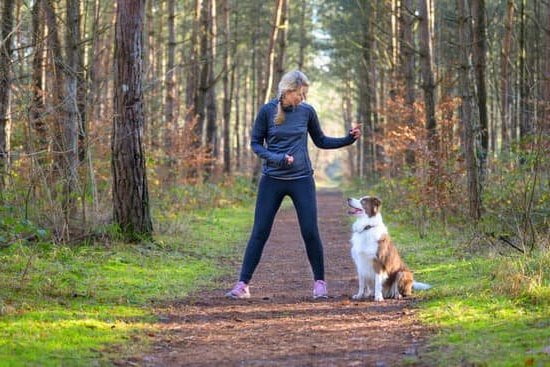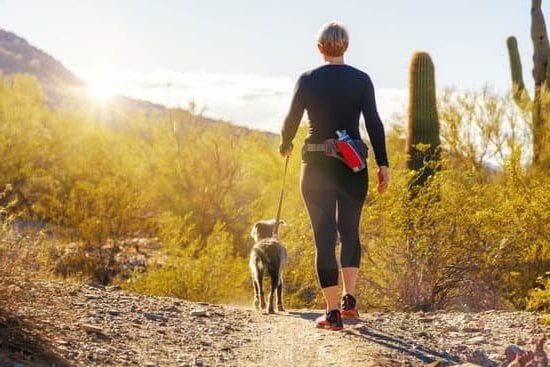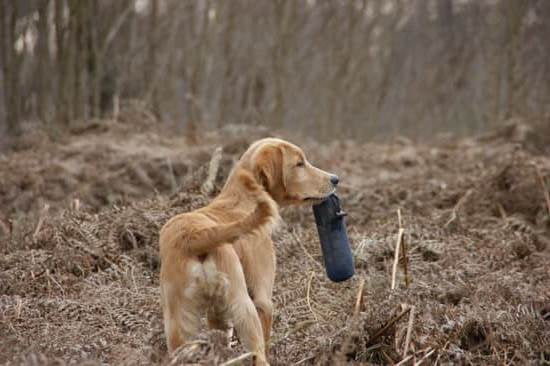Training your dog to go to the bathroom in the right place is an essential part of responsible pet ownership. Not only does it prevent unwanted messes and odors in your home, but it also promotes good hygiene for your furry friend.
In this article, we will guide you through the process of training your dog to go to the bathroom properly by establishing a routine, selecting the perfect bathroom spot, using command words and positive reinforcement, dealing with accidents, troubleshooting common challenges, and emphasizing the importance of patience and consistency. With our tips and advice, you can enjoy a well-trained dog and a clean home.
Properly training your dog to go to the bathroom eliminates potential frustrations that come with accidents inside the house or unpredictable behavior when outside. Plus, having a well-trained dog means you can confidently take them anywhere without worrying about their bathroom habits. However, not training your dog can have negative consequences. Not only would you have to deal with constant messes and odors in your home, but it can also cause stress for both you and your furry companion.
Understanding your dog’s bathroom needs is crucial in successfully training them. Dogs have different frequency requirements depending on their age and breed. By recognizing the signs that indicate they need to go to the bathroom, such as sniffing or circling around a specific area, you can ensure timely breaks that teach them proper elimination habits. Without this understanding, accidents are more likely to occur, making it difficult for both you and your dog to establish a consistent routine.
In the following sections of this article, we will delve deeper into each aspect of training your dog to go to the bathroom correctly. From creating a consistent schedule for bathroom breaks to choosing the ideal location for their business spots indoors or outdoors, we’ll provide practical guidance on overcoming common challenges during toilet training. So let’s get started on this journey towards enjoying a well-trained dog and maintaining a clean home.
Understanding Your Dog’s Bathroom Needs
When it comes to training your dog to go to the bathroom, one of the most crucial steps is understanding their bathroom needs. Dogs have their own natural instincts and bodily functions that determine when and how often they need to relieve themselves. By familiarizing yourself with these needs, you can create an effective training plan that will make the process smoother for both you and your furry friend.
Typical Frequency and Timing:
Dogs generally need to go to the bathroom several times a day, although the exact frequency can vary depending on factors such as age, size, breed, and overall health. Puppies, for example, have smaller bladders and shorter attention spans, so they may require more frequent bathroom breaks compared to adult dogs. As a general guideline, puppies usually need to eliminate every 1-2 hours, while adult dogs can usually wait 4-6 hours between potty breaks.
Recognizing the Signs:
It’s important to be able to recognize when your dog needs to go outside. While each dog may exhibit slightly different signals before needing a bathroom break, there are some common signs you can watch out for.
These include restlessness or pacing around, sniffing the ground or circling in one spot, suddenly stopping play or other activities abruptly, whining or barking at the door or towards you, and scratching or pawing at the floor. It’s crucial not to ignore these signs as it indicates that your dog is trying to communicate their need.
To help establish a solid communication between you and your furry companion during toilet training time here are some tips:
- Take note of how often your dog eliminates during the day for a few days – this will give you an idea of their regular schedule.
- Pay attention to any specific behaviors or body language cues that indicate they need to go potty.
- Consider keeping a potty log where you record each time your dog goes to the bathroom, noting the time and any particular behaviors beforehand.
- By recognizing and understanding your dog’s individual bathroom needs, you can tailor your training approach to best meet their requirements.
By clearly understanding your dog’s bathroom needs, you can train them more effectively by preemptively managing their potty schedule and meeting their needs in a timely manner. Remember that each dog may have different requirements, so it’s essential to be attentive and adaptable throughout the training process.
Establishing a Routine for Bathroom Breaks
Creating a consistent routine for your dog’s bathroom breaks is essential in successfully training them to go to the bathroom in the right place. By establishing a routine, you not only teach your dog when and where to go, but you also make it easier for them to understand and follow. Here are some tips on how to establish a routine for your dog’s bathroom breaks.
Creating a Schedule
The first step in establishing a routine is creating a schedule for your dog’s bathroom breaks. Dogs thrive on consistency, so it’s important to take them out at the same times each day. Start by determining how often your dog needs to go based on their age and breed. Puppies, for example, may need to go every 1-2 hours, while adult dogs can usually hold it for longer periods.
Once you’ve determined the frequency of bathroom breaks, set specific times throughout the day when you will take your dog outside. It can be helpful to align these times with their natural biological clock, such as first thing in the morning, after meals, and before bedtime. Be sure to stick to this schedule as closely as possible, even on weekends or days off work.
Paying Attention to Cues
In addition to following a schedule, it’s crucial that you pay attention to your dog’s cues that indicate they need to go. Every dog has their own way of communicating their bathroom needs – some may start pacing or circling, while others may sniff around or scratch at the door. Take note of these behaviors and learn to recognize them so that you can act promptly when your dog needs a bathroom break.
If you notice any signs that your dog needs to go outside during non-designated bathroom break times, don’t ignore them. Dogs have different digestive systems and bladder capacity, so they might need an extra trip outdoors occasionally. By accommodating these needs, you prevent accidents and reinforce their understanding of the appropriate bathroom behavior.
By establishing a routine for your dog’s bathroom breaks and paying attention to their cues, you are setting them up for success in learning to go to the bathroom correctly. Remember that consistency is key, so stick to the schedule and be attentive to your dog’s needs. With time and patience, your furry friend will become well-trained in this essential aspect of daily life.
Selecting the Perfect Bathroom Spot
Indoor Bathroom Spots
When it comes to selecting the perfect bathroom spot for your dog indoors, there are a few factors to consider. First and foremost, choose an area that is easily accessible to your dog. This could be a designated corner of a room or even a specific bathroom with easy-to-clean flooring.
It’s also important to consider the cleanliness of the area. Avoid choosing spots near food or water bowls as dogs generally prefer separate areas for eating and eliminating. Additionally, make sure the chosen spot is well-ventilated to prevent odor buildup.
Outdoor Bathroom Spots
Selecting the perfect outdoor bathroom spot for your dog involves considering a different set of factors. Look for an area that is away from high foot traffic and other distractions, such as play areas or gardens. Dogs may find it difficult to concentrate on their business if they are busy exploring or being excited by these distractions. Additionally, try to choose an area with natural ground cover like grass or gravel, which makes cleaning up easier and more hygienic.
The Importance of Consistency
Consistency is key when it comes to selecting the perfect bathroom spot for your dog. Choose one spot indoors and one spot outdoors and consistently bring your dog to those locations each time they need to go. By doing this, you are conditioning them to associate these areas with going potty, making the training process more effective. Changing the location frequently can confuse them and prolong the training process.
Remember, accidents are bound to happen during the training process. If your dog has an accident elsewhere, don’t scold them; instead, calmly clean up the mess using an enzymatic cleaner designed specifically for pet stains and odors. It’s important not to punish your dog as negative reinforcement can hinder their progress in learning where they should go.
By carefully selecting indoor and outdoor bathroom spots and maintaining consistency, you are setting your dog up for success in their toilet training journey. With time and patience, they will become accustomed to using the designated spots, leading to a happier, well-trained dog and a clean home.
Introducing Command Words and Positive Reinforcement
When it comes to training your dog to go to the bathroom, using command words and positive reinforcement is an essential aspect of the process. Command words help your dog associate a specific action with a verbal cue, while positive reinforcement motivates them to repeat that action in the future. By combining these techniques, you can effectively communicate your expectations to your dog and encourage them to use the designated bathroom spot consistently.
One of the first steps in introducing command words is selecting a phrase that you will consistently use when you want your dog to go to the bathroom. Some common command words or phrases include “go potty,” “do your business,” or any other phrase of your choice. The key is to choose a short and simple phrase that you are comfortable using consistently.
Once you have chosen a command word or phrase, you should start using it every time you take your dog to their designated bathroom spot. Say the command word clearly and firmly as soon as you reach the spot. Over time, your dog will associate this command with going to the bathroom, making it easier for them to understand what is expected of them.
Positive reinforcement is vital for reinforcing desired behavior during toilet training. Whenever your dog successfully goes to the bathroom in the designated spot, shower them with praise and rewards immediately after they finish. This can include treats, verbal praise such as “good job,” or even petting and affection. The goal is to make going potty in the right place a positive experience for your dog so that they are motivated to continue doing so.
Using command words and positive reinforcement together can significantly improve your chances of success when training your dog where to go potty. It takes practice and consistency, but with time, repetition, and plenty of encouragement, your furry friend will become familiar with what’s expected of them when nature calls.
| Command Words and Positive Reinforcement | Data |
|---|---|
| Common command word phrases | “Go potty,” “Do your business” |
| Importance of consistency in using command words | Helps dogs associate the command with the desired action |
| Examples of positive reinforcement | Treats, verbal praise, petting and affection |
Dealing with Accidents
Accidents are bound to happen during the process of training your dog to go to the bathroom in the right place. It’s important to know how to properly clean up accidents and react in a way that will not hinder the progress of your training.
When accidents occur, it’s crucial to clean up the mess properly to eliminate any lingering scent that may attract your dog back to that spot. Start by blotting up as much of the urine or picking up any solid waste with paper towels or disposable gloves. Avoid using ammonia-based cleaners, as the smell can resemble urine and might encourage your dog to go in that area again.
Instead, opt for an enzymatic cleaner specifically designed for pet stains and odors. These cleaners break down the organic components of your dog’s waste, eliminating any trace scents.
Reacting calmly is also key when dealing with accidents. It’s important not to punish or scold your dog for having an accident, as this can lead to fear and anxiety which will only make potty training more challenging.
Instead, simply clean up the accident without showing any anger or frustration towards your dog. If you catch your dog in the act, interrupt them gently by saying a command word like “outside” and immediately take them outside to their designated bathroom spot.
It’s helpful to keep in mind that setbacks and accidents are a normal part of toilet training for most dogs. Accidents often occur due to factors such as a change in routine, illness, or even excitement or insecurity. The key is not getting discouraged and staying consistent with your training methods.
With patience, persistence, and positive reinforcement, you can successfully train your dog to go to the bathroom in the right place. Remember that accidents are temporary setbacks on the path towards enjoying a well-trained dog and a cleaner home.
Troubleshooting Common Toilet Training Challenges
Training your dog to go to the bathroom in the right place can sometimes come with certain challenges. Understanding and addressing these challenges will help ensure a smooth and successful training process. Here are some common issues that may arise during toilet training, along with practical tips for overcoming them effectively.
1. Accidents Inside the House: It’s not uncommon for dogs to have accidents inside the house during the early stages of training. If this happens, it’s important not to scold or punish your dog as it can create fear and anxiety around bathroom time. Instead, focus on reinforcing positive behavior when your dog eliminates in the correct spot. Use treats and praise as positive reinforcement to encourage your dog’s understanding of where they should go.
If accidents continue to occur inside, consider restricting access to certain areas of the house until your dog becomes consistently trained. You can use baby gates or close doors to keep them within a specific area where accidents are easier to clean up.
2. Reluctance to Go Outside: Some dogs may initially be hesitant about going outside for bathroom breaks due to various factors such as fear, noise sensitivity, or unfamiliar surroundings. In such cases, start by gradually introducing your dog to the outdoor environment by taking short walks with them around their designated bathroom spot.
To further motivate your dog, you can also try using special treats or a favorite toy that they only receive after successfully eliminating outside. This positive association can help overcome any reluctance and increase their willingness to go outside for bathroom breaks.
3. Lack of Progress: If you find that your dog is not making progress or consistently having accidents despite following a strict routine and providing positive reinforcement, it might be helpful to consult a professional dog trainer or veterinary behaviorist. They can provide expert guidance tailored specifically to your dog’s unique needs and help identify any underlying issues that may be hindering their progress.
Remember, toilet training takes time and patience. Each dog learns at their own pace, so it’s important to remain consistent and persistent in your training efforts. With dedication and a positive approach, you can overcome these common challenges and enjoy a well-trained dog who knows where to go to the bathroom.
Patience and Persistence
Training your dog to go to the bathroom can be a challenging process, but it is essential to remain patient and persistent. Consistency is key when teaching your dog this important skill, as it helps them understand what is expected of them. By following a consistent routine and using positive reinforcement techniques, you can effectively train your dog to go to the bathroom in the right place.
One of the most crucial aspects of consistency in toilet training is establishing a regular schedule for your dog’s bathroom breaks. Dogs thrive on routine, so having a consistent routine will help them understand when and where they should relieve themselves. Start by taking your dog outside first thing in the morning, after meals, before bedtime, and periodically throughout the day. Puppies will typically need more frequent bathroom breaks compared to adult dogs.
In addition to establishing a routine, using consistent command words can also aid in toilet training. Choose simple and clear commands such as “go potty” or “do your business.” Use these commands every time you take your dog outside to their designated bathroom spot. Over time, your dog will associate these words with going to the bathroom and will learn to use it as a cue.
Positive reinforcement plays a major role in encouraging your dog’s desired behavior during toilet training. Whenever your dog successfully goes to the bathroom in the right spot, immediately praise them enthusiastically and offer treats as rewards.
This positive association will reinforce their good behavior and motivate them to continue using the designated area. On the other hand, avoid punishing or scolding your dog for accidents inside the house as this can create fear or anxiety that may interfere with successful training.
By maintaining patience and persistence throughout the toilet training process, you can achieve success with your dog. Remember that accidents are normal during training, so it’s important not to get discouraged or give up. Consistently follow the established routine, use positive reinforcement techniques, and calmly clean up accidents when they occur. With time and dedication, your dog will learn to go to the bathroom in the right place, leading to a well-trained dog and a clean home.
| Training Tips | Effective Techniques |
|---|---|
| Establish a regular schedule | Create a routine for consistent bathroom breaks |
| Use clear command words | Choose simple and consistent commands like “go potty” |
| Offer rewards and praise | Motivate your dog with treats and enthusiastic praise for using the right spot |
Conclusion
Training your dog to go to the bathroom correctly is essential for maintaining a clean and hygienic home environment. By following the steps outlined in this article, you can establish a routine, select the perfect bathroom spot, introduce command words and positive reinforcement, and effectively deal with accidents. Consistency and patience are key throughout the training process.
By properly training your dog, you not only prevent accidents inside the house but also maintain a healthy living space for both you and your furry friend. A well-trained dog who knows where and when to go to the bathroom is less likely to have accidents or cause damage to your home. This allows you to enjoy a clean and comfortable living space without constantly worrying about odors or stains.
Remember that training your dog to go to the bathroom correctly takes time and effort. It requires consistency in establishing a routine, using command words, and providing positive reinforcement. Be patient with your furry companion and celebrate their progress along the way. Even if there are setbacks or challenges, don’t give up – continue working with your dog until they are fully trained.
In conclusion, by investing time and energy into training your dog to go to the bathroom properly, you can create a harmonious living environment for both you and your pet. Enjoy the benefits of having a well-trained dog who understands where their designated bathroom spot is and follows your commands. With patience, persistence, and dedication, you can successfully train your dog to go to the bathroom correctly while maintaining a clean home.
Frequently Asked Questions
How do I get my dog to go to the bathroom?
To get your dog to go to the bathroom, it’s important to establish a consistent routine and provide appropriate opportunities for elimination. Start by taking your dog outside to the designated bathroom area at regular intervals, such as after meals, playtime, waking up from sleep, or when showing signs of needing to go. Choose a specific command or phrase that you consistently use while they are eliminating, like “go potty,” which can help them associate it with the action.
Praise and reward your dog immediately after they successfully go to the bathroom outside. It’s also crucial to be patient and avoid punishing accidents, as this can create anxiety or confusion in your dog.
How can I train my dog to go to the bathroom faster?
Training a dog to go to the bathroom faster primarily depends on reinforcing good habits and ensuring they understand your expectations. One way to help speed up the process is by observing your dog for any cues or signals that indicate their need to eliminate and promptly taking them outside. Some common signs include sniffing around or circling in one spot.
By being aware of these hints, you can act proactively rather than waiting until it becomes urgent for your dog. Additionally, keeping a consistent feeding schedule will enable you to predict when your dog is more likely to need to go and plan accordingly.
Can you train a dog to pee and poop in the toilet?
It is indeed possible to train a dog to pee and poop in the toilet, although this requires time, patience, and proper training techniques. This method typically involves gradually transitioning the dog from outdoor elimination spots onto a special training device that fits on top of the toilet seat and mimics natural grass or other suitable materials for dogs’ elimination behavior. The process involves teaching the dog an alternative cue distinct from their regular outdoor command that signals them it’s time for elimination on the toilet platform instead of going outside.
Slowly progress towards removing other outdoor options until using the toilet becomes habitual for them. It’s important not to rush this process and always provide positive reinforcement throughout the training journey.

Welcome to the blog! I am a professional dog trainer and have been working with dogs for many years. In this blog, I will be discussing various topics related to dog training, including tips, tricks, and advice. I hope you find this information helpful and informative. Thanks for reading!





